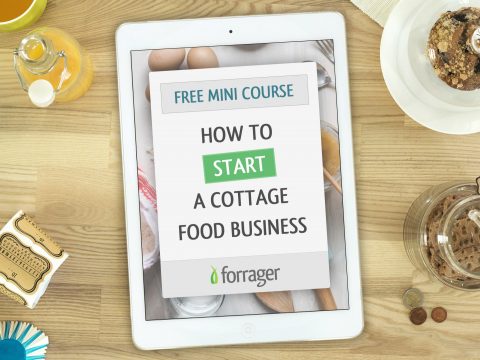Virginia Home Food Processing Operation Can you legally sell food from home in Virginia?
Cottage Food Law
Unlike almost every other state, Virginia allows people to operate very unrestricted food businesses out of their homes. Their food laws are very different than most states, written in such a way that there is not any distinction between a food business that uses a commercial kitchen versus a home kitchen. Instead, the distinction is provided by the ag department.
However, because these home food businesses have so few restrictions, the setup process is relatively complicated, compared to most states’ cottage food laws. Fortunately, Virginia also has a cottage food law which exempts some types of producers from needing to go through this process or get their kitchen inspected.
Producers under these rules can sell at any venue, either directly or indirectly, and they can make any product that does not contain meat. The somewhat complicated setup process includes a lengthy application, a kitchen inspection, and required training for acidified food products. Home food processing operations are charged a $40 annual fee.
Considering the low startup cost and the fact that this type of home food business is impossible in almost all states, Virginia’s food laws and rules are very friendly to home cooks.
Selling Where can you sell homemade food products?
Although not specified, it is unlikely that you will be able to serve food at your home, due to zoning restrictions.
To start a catering business, you need to use a commercial kitchen.
Allowed Foods What food products can you sell from home?
Any food item that does not contain meat is allowed. To sell meat-containing products, you need to contact the VDACS Office of Meat and Poultry Services at 804-786-4569.
Limitations How will your home food business be restricted?
If you have an uncaged pet, your kitchen and storage areas must have doors that will prevent the animal from accessing those areas at all times.
Business What do you need to do to sell food from home?
The application for a home food processing operation includes a number of requirements:
- Business information
- Kitchen and storage area diagram
- Information sheets for each product (including full recipes and process plans)
- Labels for each product
- Product distribution plan
- List of sources for all ingredients
After submitting your application, an inspector will come to inspect your home kitchen. You cannot start your business until your kitchen has been approved.
Although not initially levied, your business will be charged a $40 annual inspection fee, regardless of whether an inspector comes to your home every year.
For more info about the inspection and annual fee, read the department’s inspection FAQs.
Contact your zoning office to get approval to operate a home business.
If your water comes from a private well, you must get it tested, which would incur additional fees.
If you make acidified foods (pickled goods, salsas, sauces, etc), you need to complete a Better Control Process School training course for acidified foods, which costs about $250. Contact your ag department to learn about upcoming courses.
If you make acidified foods (pickled goods, salsas, sauces, etc) or items containing garlic in oil, the production processes for those products need to be approved by a processing authority. More information about finding a processing authority can be found in the application.
Labeling How do you label cottage food products?
Chocolate Chip Cookies
Forrager Cookie Company
123 Chewy Way, Cookietown, VA 73531
Ingredients: enriched flour (wheat flour, malted barley flour, niacin, iron, thiamin mononitrate, riboflavin, folic acid), butter (cream, salt), semi-sweet chocolate (sugar, chocolate, cocoa butter, milkfat, soy lecithin, natural flavors), brown sugar, granulated sugar, eggs, vanilla extract (vanilla bean extract, alcohol, sugar), baking soda, salt (salt, calcium silicate)
Contains: milk, eggs, wheat, soy
NET WT 2 lb 4 oz (1.02 kg)
More detailed labeling information can be found in the application.
Resources Where can you find more information about this law?
- Department
- VDACS - Office of Food Safety
- Employee
- Emma Lofton
- emma.lofton@vdacs.virginia.gov
- Telephone
- 804-786-3520
- Fax
- 804-371-7792
- Address
- PO Box 1163, Suite 345
Richmond, VA 23218 - About
- North of Richmond includes Charlottesville
Northern VA (NOVA) Region Office
- Department
- VDACS - Office of Food Safety
- Employee
- Lisa Ramsey
- lisa.ramsey@vdacs.virginia.gov
- Telephone
- 540-562-3641
- Fax
- 540-562-3649
- Address
- 2943-E Peters Creek Road
Roanoke, VA 24019 - About
- Includes Harrisonburg and East to Prince Edward County
Southwest Region Office
- Department
- VDACS - Office of Food Safety
- Employee
- Annie McCullough
- annie.mccullough@vdacs.virginia.gov
- Telephone
- 757-363-3840
- Fax
- 757-363-3838
- Address
- 5700 Thurston Ave, Suite 104
Virginia Beach, VA 23455 - About
- Includes Richmond city and Three Rivers
